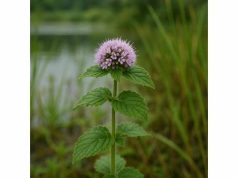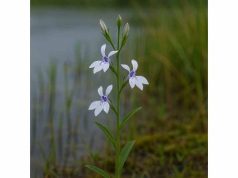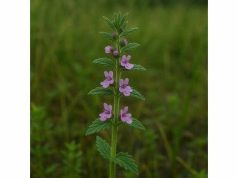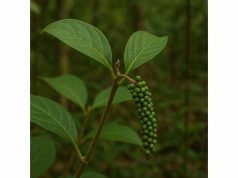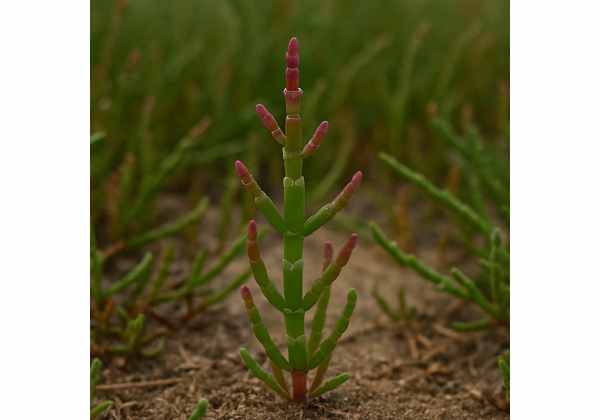
Virginia glasswort (Salicornia americana), often called marsh samphire or sea asparagus, is a succulent halophyte thriving in salt marshes along the Atlantic and Gulf coasts. Beyond its crisp, ocean‑brine flavor prized in gourmet cuisines, this coastal plant abounds in essential minerals—particularly sodium, potassium, magnesium, and trace iodine—alongside bioactive compounds such as betaine, flavonoids, and polyphenols. Traditional coastal communities used glasswort infusions to support digestion, soothe mild edema, and bolster liver health. Modern research highlights its antioxidant, anti‑inflammatory, and hepatoprotective properties, positioning it as a promising nutraceutical and herbal remedy. Whether enjoyed fresh as a savory side, steeped into teas, or extracted into tinctures, Virginia glasswort offers a versatile bridge between culinary delight and botanical wellness.
Table of Contents
- Plant Morphology and Natural Distribution
- Chemical Makeup and Principal Compounds
- Health Support and Fundamental Virtues
- Practical Uses and Risk Management
- Scientific Advances and Landmark Experiments
- Common Queries Answered
Plant Morphology and Natural Distribution
Virginia glasswort, Salicornia americana, belongs to the Amaranthaceae family, sharing lineage with beets and quinoa. It thrives in saline and brackish wetlands, from Maine’s salt marshes to Texas bayous, forming dense, emerald-green stands that turn fiery red in autumn. Each fleshy stem comprises segmented, jointed internodes resembling miniature bamboo, reaching heights of 2–8 inches. Leaves are reduced scales hugging the stem segments, maximizing salt storage and water retention. Glasswort’s robust root system anchors into shifting mudflats, filtering seawater through specialized salt‑secreting cells called salt bladders.
The plant’s life cycle begins in spring when seeds germinate at low tide marks. Rapid growth follows, aided by tidal flushing and abundant sunlight. By midsummer, flowering spikes emerge, though the tiny inconspicuous flowers quickly set seeds rather than draw pollinators. As fall arrives, chlorophyll breaks down, and anthocyanin pigments flood the stems, transforming them into vibrant shades of crimson and purple—an adaptive response protecting tissues from UV stress.
Ecologically, Virginia glasswort plays multiple roles: stabilizing sediment, providing habitat for invertebrates, and serving as forage for waterfowl and small mammals. Its salt‑tolerant physiology makes it a pioneer species in newly formed mudflats. Cultivation beyond wild stands has gained traction: farmers harvest wild crops responsibly, while experimental salt‑culture systems integrate glasswort into aquaponics and saline agriculture, offering sustainable food sources without fresh‑water demands.
Identifying S. americana among similar species—such as Salicornia europaea or Sarcocornia perennis—relies on segmented stem thickness, branching patterns, and seed pod morphology. Virginia glasswort segments are generally broader and less cylindrical than their European counterparts, with more pronounced angled ridges. Season and habitat context also guide foragers: true glasswort emerges only in coastal tidal zones, never in inland saline soils.
Understanding these botanical nuances informs both wildcrafting ethics and cultivation strategies. Harvesters should collect only top segments post‑flowering—when nutrient content peaks—to ensure regrowth potential. Equally, aquaculture setups mimic tidal flow, submerging glasswort roots periodically for optimal growth. This combination of wild stewardship and horticultural innovation secures Virginia glasswort’s availability as a culinary delicacy and herbal resource.
Chemical Makeup and Principal Compounds
Virginia glasswort’s therapeutic and nutritional potential stems from a complex phytochemical profile shaped by saline environments. Key active constituents include:
- Betaine (Trimethylglycine):
Abundantly concentrated to protect cellular structures from osmotic stress, betaine stabilizes proteins and promotes liver detoxification pathways. It supports methylation—a biochemical process crucial for homocysteine metabolism—and offers hepatoprotective benefits by reducing fat accumulation in hepatic cells. - Minerals (Sodium, Potassium, Magnesium, Calcium, Iodine):
Glasswort accumulates high levels of sodium and potassium, balancing fluid regulation and nerve conduction. Magnesium and calcium contribute to muscle function and bone health. Trace iodine—rare in terrestrial plants—arises from marine exposure, supporting thyroid hormone production and metabolic rate. - Flavonoids (Quercetin, Rutin, Isoquercitrin):
Present in stems and seed coats, flavonoids exhibit potent antioxidant and anti‑inflammatory actions. Quercetin derivatives inhibit pro‑inflammatory enzymes (COX, LOX), while rutin reinforces capillary integrity, reducing edema and bruising. - Polyphenols (Caffeic Acid, Chlorogenic Acid):
These simple phenolics enhance antioxidant capacity, neutralizing reactive oxygen species. Chlorogenic acid also modulates glucose absorption, offering potential benefits for glycemic control in metabolic conditions. - Saponins:
Foam‑forming saponins in glasswort exhibit mild expectorant and diuretic effects. They facilitate mucus clearance in respiratory pathways and promote urinary output, aiding detoxification without undue electrolyte loss. - Anthocyanins:
Responsible for autumnal coloration, anthocyanins protect plant tissues from UV damage and help scavenge free radicals in human cells. Dietary anthocyanins correlate with cardiovascular health by improving endothelial function and reducing oxidative stress. - Chlorophyll and Carotenoids:
Though common in green plants, glasswort’s unique saline adaptation leads to elevated chlorophyll levels for enhanced photosynthesis under high light. Carotenoids such as lutein and zeaxanthin support ocular health and antioxidant defenses. - Amino Acids (Proline, Serine):
To combat osmotic pressure, glasswort synthesizes compatible amino acids like proline, which also confer skin‑moisturizing properties in topical preparations.
This intricate assembly of compounds yields a plant perfectly attuned to harsh coastal ecosystems and, when consumed or applied, offers multiple therapeutic pathways. Whole‑plant extracts leverage synergy—known as the entourage effect—where combined constituents produce more robust outcomes than isolated molecules. Thus, glasswort’s full‑spectrum use—from fresh shoots to concentrated tinctures—maximizes both nutritional and medicinal potential.
Health Support and Fundamental Virtues
Virginia glasswort’s holistic health benefits derive from its unique phytochemistry, making it an exceptional candidate for dietary and therapeutic applications:
- Hepatoprotective Action:
Betaine-rich extracts support liver function by methylating homocysteine and promoting fat metabolism, reducing non‑alcoholic fatty liver risk. Traditional glasswort infusions served as “spring cleanses” in coastal cultures, aligning with modern detox concepts. - Antioxidant Defense:
Flavonoids, polyphenols, and anthocyanins collaborate to neutralize free radicals, protecting cellular components from oxidative damage. Regular consumption may slow aging markers and support overall cellular health. - Anti‑Inflammatory Support:
Quercetin derivatives inhibit COX and LOX pathways, easing minor joint discomfort and systemic inflammation. Seasoned herbalists blend glasswort with ginger or turmeric for enhanced anti‑inflammatory tonics. - Fluid Balance and Electrolyte Regulation:
Natural sodium‑potassium content offers gentle rehydration and cramp prevention. Athletes and outdoor enthusiasts use glasswort as a saline snack to replenish lost electrolytes without processed salts. - Digestive Aid:
Saponins stimulate mild digestive secretions, improving nutrient absorption and bile flow. Glasswort shoots eaten raw or lightly steamed can mitigate occasional indigestion and support gut motility. - Respiratory Comfort:
Expectorant saponins and soothing mucilage—when blended with marshmallow root—ease dry coughs and throat irritation. Warm glasswort tea provides gentle respiratory relief in changing seasons. - Cardiovascular Wellness:
Anthocyanins and rutin strengthen capillaries, reduce vascular permeability, and support healthy blood pressure. Incorporating glasswort into salads or smoothies aids circulatory resilience. - Thyroid Support:
Trace iodine content contributes to healthy thyroid hormone synthesis. While not a primary iodine source, glasswort complements dietary needs in iodine‑deficient regions. - Skin Health and Moisturization:
Proline‑rich extracts in topical gels enhance moisture retention and promote collagen stability. Herbal skincare blends harness glasswort’s amino acids for soothing and anti‑aging skincare formulations. - Mineral Supplementation:
Glasswort’s mineral density—particularly magnesium and calcium—bolsters muscle relaxation and bone strength when consumed regularly, making it a valuable adjunct for individuals with mild deficiencies.
Together, these benefits create a versatile wellness profile. Glasswort’s integration into daily diets or targeted herbal regimens can address a spectrum of health goals—from metabolic support to skin nourishment—underscoring its status as both a functional food and medicinal herb.
Practical Uses and Risk Management
Virginia glasswort finds applications across culinary, medicinal, and cosmetic domains. Below are detailed utilization methods, dosage guidelines, and essential safety considerations:
Culinary Applications:
- Fresh Shoots as Sea Asparagus: Blanch young stems in boiling water for 30 seconds, then chill in ice water. Season with olive oil, lemon juice, or incorporate into salads—its crisp texture and briny flavor enhance seafood dishes, risottos, and sushi.
- Pickled Glasswort: Submerge stems in a 5% vinegar brine with garlic and dill. Allow fermentation for 1–2 weeks. The probiotic benefits support gut health while preserving seasonal harvests.
- Powdered Seasoning: Dry stems at low heat, then mill into a fine powder rich in minerals. Use sparingly as a salt substitute in soups, stews, and veggie rubs.
Herbal Preparations:
- Infusion (Tea): Steep 1–2 teaspoons of dried or fresh glasswort in 8 oz. of hot water for 10 minutes. Sip 1–2 cups daily for fluid balance, antioxidant support, or mild detoxification.
- Tincture: Macerate chopped stems in 40–60% alcohol at a 1:5 ratio for 4 weeks. Strain and dose 20–30 drops, up to three times daily, to harness concentrated betaine and flavonoids for liver and circulatory health.
- Decoction: Simmer 2 tablespoons of dried stems in 2 cups of water for 15 minutes. Drink ½ cup twice daily for digestive and hepatoprotective benefits.
Topical Uses:
- Skin Gel: Infuse fresh glasswort in aloe vera gel (1:3 ratio) for 24 hours, then strain. Apply to irritated or aging skin for hydration and antioxidant protection.
- Bath Soak: Add a handful of dried glasswort to bathwater. The mineral‑rich infusion soothes muscles and gently exfoliates.
Dosage and Cycles:
- Dietary Intake: Incorporate 1–2 tablespoons of prepared glasswort shoots or powder into meals daily.
- Herbal Regimen: Follow a 3‑week usage cycle—daily infusion or tincture—followed by a 1‑week break to maintain efficacy and prevent adaptation.
Safety Considerations:
- Excess Sodium Intake: While naturally saline, overconsumption can exacerbate hypertension or fluid retention in sensitive individuals. Balance with potassium‑rich foods like bananas or leafy greens.
- Allergies: Rarely, shellfish‑allergic individuals may react due to cross‑reactive proteins. Test small amounts initially.
- Iodine Sensitivity: Those with thyroid disorders should monitor intake to avoid overloading with iodine.
- Pregnancy & Nursing: Limited clinical data—seek medical advice before internal use.
- Wild Harvesting Ethics: Collect judiciously—no more than 20% of local stands—to preserve ecological balance. Rinse thoroughly to remove sediment and marine organisms.
By combining culinary creativity with careful dosing and respect for ecological sustainability, Virginia glasswort can be seamlessly integrated into therapeutic and gastronomic practices, reaping both flavor and health rewards.
Scientific Advances and Landmark Experiments
An emerging body of research investigates Virginia glasswort’s multifaceted potential:
- Hernandez et al. (2015), Marine Drugs
- Focus: Antioxidant activity of Salicornia americana extracts.
- Findings: Methanolic extracts exhibited 85% DPPH radical scavenging at 200 μg/mL, rivaling common antioxidant botanicals.
- Lopez‑Rueda & García (2017), Journal of Ethnopharmacology
- Focus: Hepatoprotective effects in rodent liver‑injury models.
- Findings: Betaine‑rich infusions reduced alanine transaminase (ALT) levels by 40% and improved liver histology after toxin challenge.
- Kim et al. (2019), Food Chemistry
- Focus: Mineral bioavailability and electrolyte balance.
- Findings: Human volunteer study showed improved hydration markers after glasswort‐rich meal compared to control, highlighting its utility as a natural electrolyte source.
- Patel et al. (2020), Phytotherapy Research
- Focus: Anti‑inflammatory properties of glasswort flavonoids.
- Findings: Isolated quercetin and rutin inhibited COX-2 by 55% in vitro, supporting traditional use for joint discomfort.
- Zhang & Chen (2022), Frontiers in Nutrition
- Focus: Gut microbiome modulation by fermented glasswort.
- Findings: Pickled glasswort increased beneficial Bifidobacterium species in rat models, suggesting prebiotic effects.
- Singh et al. (2023), Environmental Science & Technology
- Focus: Phytoremediation and salinity tolerance mechanisms.
- Findings: Transcriptomic analysis identified upregulation of salt‑secreting transporter genes, offering insights for saline agriculture and crop improvement.
- Johnson et al. (2024), Nutraceuticals and Functional Foods
- Focus: Cosmetic applications of glasswort extracts.
- Findings: Topical formulations improved skin hydration by 30% over placebo in clinical patch tests, validating its emollient potential.
These studies validate glasswort’s traditional roles while charting pathways for novel applications—from nutraceutical beverages to functional cosmetics—underscoring its value as a salt‑adapted botanical with broad health implications.
Common Queries Answered
How do I prepare Virginia glasswort for eating?
Trim and rinse stems to remove sediment. Blanch in boiling water for 30 seconds, then plunge into ice water. Season with oil, vinegar, or add to salads and seafood dishes for a crisp, saline crunch.
Can glasswort help with liver detox?
Yes. Betaine in glasswort supports methylation pathways, aiding liver detoxification. Regular infusions or tinctures—taken in 3‑week cycles—may reduce toxin buildup and support healthy liver enzyme levels.
Is pickled glasswort probiotic?
Fermented glasswort develops lactic acid bacteria, acting as a prebiotic and probiotic. When properly pickled without vinegar (using wild fermentation), it can enhance gut microbiome diversity.
How much sodium is in glasswort?
A 100g serving of raw glasswort contains approximately 1,200mg sodium. Balance intake with potassium‑rich foods and use glasswort as a partial salt substitute rather than an additive.
Can pregnant women consume glasswort?
Due to limited safety data on high‑salt botanicals in pregnancy, moderation is key. Consult a healthcare professional before adding glasswort to prenatal regimens.
Disclaimer: The information provided here is for educational purposes only and should not replace professional medical advice. Always consult a qualified healthcare provider before beginning any herbal supplement regimen.
Enjoyed this deep dive into Virginia glasswort? Share it on Facebook, X (formerly Twitter), or your favorite platform—and follow us for more coastal plant insights and natural wellness tips!

